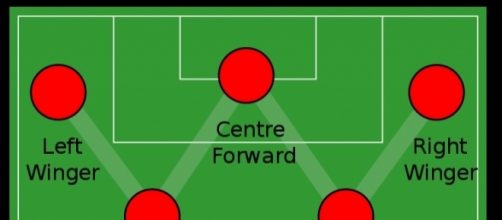Some prefer to call it football while others call it soccer. All the same, soccer happens to be the most popular sports on the planet. The game has an estimated fan base of 3.5 billion and that is just online.
Football is more than just the goals scored against the opponents. It is even more than having your favorite club winning a cup. According to the Express, Manchester City is currently on top of the charts in this season's English Premier League. What makes the sport even more exciting is the game itself. It is more like chess but faster and on a pitch.
It is about the skills of each player, teamwork, and strategy. Mostly football is about strategies trying to outshine each other in only 90 minutes. The strategies can be seen in the football formations on the pitch. The opponents then try to outwit the other team with counter moves to get a chance to score.
The rise of WM
The WM formation heralded Arsenal’s glory days under the management of Herbert Chapman. It helped the club win 5 First Division titles and 2 FA Cups in the 1930s. The strategy was so great that other clubs across England adopted it including England’s national team.
Early football formations took a pyramid-like structure. The 2-3-5 and 2-2-6 were commonly used. All this changed when the 1925 offside law required attackers to have only two opponents between them and the opponent’s goal.
In order to comply with the new regulations, the then Arsenal manager, Herbert Chapman, put an equal number of players on both the defensive and offensive ends. This 3-2-2-3 formation led to the letter W on the defender’s side and letter M on the forward’s side hence the WM.
The WM included 3 defenders who stayed close to the goalkeeper when in defense. The defenders then spread out to prevent long ball counterattacks. To be more effective, 2 wingers with good crossing ability and 2 central midfielders with speed had to lie ahead on both sides of the pitch.
Arsenal was an unsuccessful club back then. Chapman had agreed to join Arsenal after winning the FA Cup and 2 Division One titles with Huddersfield.
In his first season, he steered the Gunners to an FA Cup quarter-final and second place finish in the First Division. In 1927, Arsenal had reached their first ever FA Cup final but lost to Cardiff City at Wembley. This became the first time the FA Cup left England.
Within three years, the FA Cup was brought to Highbury when the Gunners overcame Huddersfield Town in 1930. This became the beginning of Arsenal’s dominance in English football and the spread of the WM formation. Players such as Cliff Bastin and Alex James adapted well to WM making Arsenal a triumphant team. The club went on to win 5 First Division titles and 2 FA Cups between 1931 and 1939.
The Fall of WM
The WM met its shocking 6-3 defeat in the "Hungary vs.
England" game. The England team lined up in the WM formation while Hungary used the WW formation. The Hungarian formation was more fluid and this allowed the players to easily bypass their markers. Nandor Hidegkuti and Ferenc Puskas were able to draw the English players out of position.
This defeat resulted in a review of the WM as it could not withstand the pressure posed by the more flexible WW formation. In 2016, NYCFC head coach, Patrick Vieira, revived WM but it backfired as the club lost 7-0 in the aggregate series. According to MLS Soccer, Vieira is determined to not make the same mistake again.


